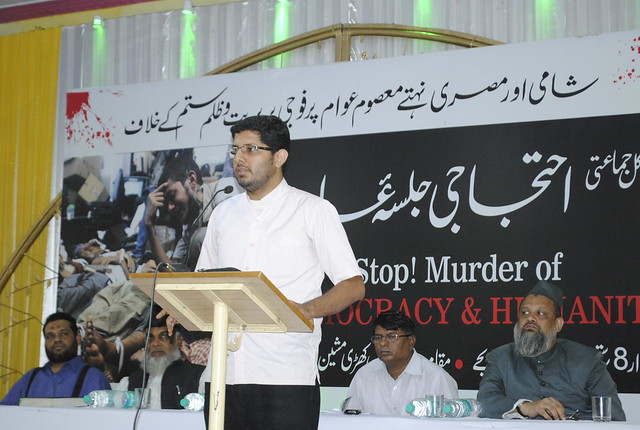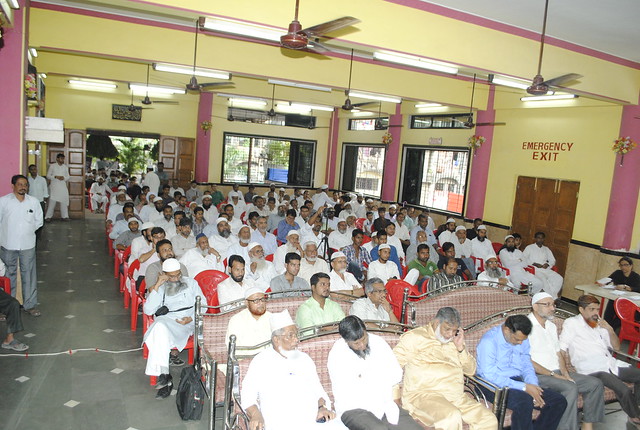By Ram Puniyani,
Identity issues are at the fore in current times. Those basing their politics on the identity issues have lot of assertions about who the ‘others’ are. There is a constant ongoing attempt to assimilate them in the umbrella of their religion and culture. Current times, where religious nationalism dominates, the scene is that amongst all our multiple identities, the religious one is kept at the fore. In this attempt one recalls that it was Murli Manohar Joshi of RSS-BJP who coined the term Ahmadiya Hindus for Muslims and Christi Hindu for the Christians. Not only this is meant to assimilate the other religious minorities, RSS has also been saying that Sikhism is just a sect of Hinduism not a religion by itself. There are multiple assertions at different times; the goal is to somehow label all the people under the umbrella of Hinduism, to label most as Hindus, either on the ground of religion or culture. Sometimes Muslims are told that their ancestors were Hindus and so what has changed is just the mode of worship.
On the same pattern the Goan Chief Minister Manohar Parrikar is the latest one in this direction of appropriation of the ‘other’. In an interview he put forward his take on the issue of culture of Goan Catholics. Talking to the New York Times India blog (06, Sept 2013) he said that Catholics in Goa are culturally Hindu and that India is a Hindu nation in cultural sense.
What is this Hindu culture Parrikar is talking about? Let us understand there is no uniform Hindu culture. Amongst Hindus the cultural variations are vast; they are affected by the region, the area in which they live, caste and economic status amongst other things. The hall mark of the society is that culture is basically diverse and most affected by region, so culture generally is not labeled with religious prefix. Diversity is the core of culture of the society. Parikkar does say that culture of a Goan Catholic is different from the one in Brazil. Let’s remind him that culture of Catholics in every country is different. Within the same country it is again not uniform. To say that there is something like Hindu culture out there is an attempt to hegemonize, to impose some sort of homogeneity on something whose life breath is diversity.
There have been the theorists who argued that as different cultures meet they will merge into uniformity, what is popularly called as the ‘melting pot’ model. This is not what the society has seen. What has been observed is the ‘mosaic model’ or a ‘salad bawl’ model, where different shades, colors remain and add to the beauty of the whole. In cultural arena a dynamic interaction and some synthesis does take place while the different shades also continue to add their essence to the whole. There are many Hindus who will visit the Dargah of a Peer or Sufi saint and many Muslims who follow the Hindu saints of medieval times. Many a time’s food habits also become important ingredient of culture. While currently it is projected that eating beef is against Hindu practices there have been large number of Hindu communities eating beef. At personal level one recently came across a Hindu family on a tour to Europe, which was longing to relish beef. The tour operators had organized a vegetarian- non beef meal for the Indian tourists. This family made their own arrangement to eat beef somehow. Anthropological survey had identified large number of Hindu communities consuming beef. Now how will Parikkar handle the fact that Goan Catholics consume beef as well as pork, will he call it a ‘Hindu culture’? Currently cow is one of the major tool-symbol of Parrikar brand of politics, the one of Hindutva. How will Parrikar engage with Catholics eating beef?
Catholics of Goa may not have much in common with Catholics of other countries but that does not make them part of ‘Hindu culture’, if at all such a category can be coined. The core point is cultures cannot be restricted to religious categories. There are nearly 56 Muslim majority countries in the World, and their culture is as diverse as the cultural diversity within India. There is a vast range. Hinduism has been mostly restricted to India, there are Hindu communities in different parts of the World to be sure, but culturally they are as diverse as any other religious community.
So why is RSS swayamsevak Parikkar trying to appropriate the Catholics into Hindu cultural fold? The idea is that RSS-Parrikar politics is founded on the premise that India is a Hindu nation. So something Hindu has to be tagged on to other religious communities to claim their support at electoral level. There is a complex policy towards minorities as far as RSS progeny is concerned. At electoral level their support has to be won over, so some sort of Hindu label is to be put on them. There is also an attempt to impose Hindu norms on them, so some times they are called Ahmadiya Hindus or Christi Hindus. This gives RSS politics a scope to force them to adopt Hindu deities over a period of time. At the level of Governance and social politics, the idea is to subjugate them through violence and marginalization. We have seen enough propaganda-blames on Christians and Muslims, blames about conversion, beef eating, loyalty to other nations etc., the propaganda which is the base of ‘Hate other’ ideology, and communal violence. The burning alive of Pastors, rape of nuns, burning of Churches, violence against Muslims and Christians has been stalking the country. At the level of Governance, in the political arena the Parrikar parivar agenda is to oppose affirmative action for religious minorities or even to the socially disadvantaged people.
Indian Constitution and norms of United Nations do recognize and value the diversity of culture of people. The sectarian political tendencies all over, Parrikar included, begin with labeling them in their own hegemonic version of culture and politics and then go on to impose the same on ‘others’. The cleverness and shrewd maneuvers don’t end here. Simultaneously they can go on with anti minority propaganda and their marginalization in the social-economic terrain.
(Ram Puniyani was a professor in biomedical engineering at the Indian Institute of Technology Bombay, and took voluntary retirement in December 2004 to work full time for communal harmony in India. He is involved with human rights activities from last two decades.He is associated with various secular and democratic initiatives like All India Secular Forum, Center for Study of Society and Secularism.)







